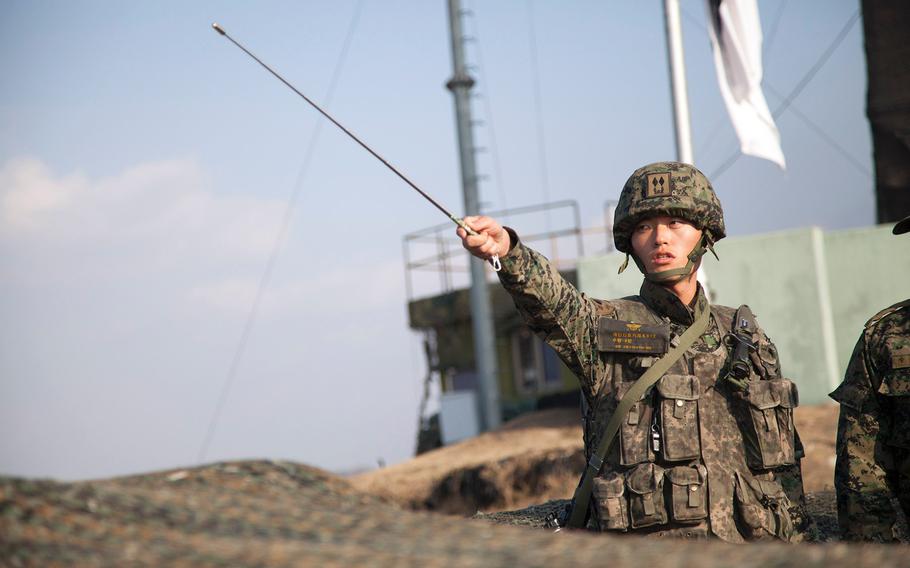Asia-Pacific
YEAR IN REVIEWTransfer of command from US to S. Korea questioned as North acted up
Stars and Stripes January 2, 2014

A South Korean military officer points across the boarder into North Korea while briefing U.S. Vice President Joe Biden at Observation Point Ouellette on Dec. 7, 2013. (Chris Church/U.S. Navy)
SEOUL — Weeks of heightened rhetoric and near-daily threats of war from North Korea in the spring elevated tensions on the peninsula to their highest level in years, raising concerns that Pyongyang was planning a surprise provocation and pushing South Korea to ask for a delay in the scheduled transfer of wartime control of joint forces.
The North issued a series of statements stretching roughly from March to May that included a boast that, with the push of a button, it could launch missiles that would turn the U.S. mainland and American bases in the Pacific into a “sea of fire.” It also declared invalid the armistice that effectively ended the Korean War and said it considered itself to be in a “state of war.”
The period of increased threats followed the North’s launch of a three-stage rocket last December and its third nuclear test in February. Pyongyang also barred South Korean workers in April from crossing the border to work at the jointly run Kaesong Industrial Complex, essentially shutting down the lone remaining symbol of inter-Korean cooperation, though it lifted the restriction months later.
The U.S. responded to the threats with conspicuous shows of force, including sending two B-2 Stealth bombers on a training mission to South Korea and positioning a guided-missile destroyer off the peninsula’s southwest coast.
American officials said at the time that their greatest concern was the possibility of miscalculation by the young and relatively inexperienced North Korean leader Kim Jong Un, who assumed control of the country after the sudden death of his father Kim Jong Il in December 2011.
Little is known about the younger Kim, who surprised many by purging his uncle Jang Song Thaek, one of the most powerful figures in the country, in late 2013.
Many analysts said during the year that the regime appears to be stable, at least for now.
“In all probability, I would say Kim Jong Un is here to stay at least for the next few years,” Andrei Lankov, a North Korea expert at Kookmin University, said a September conference in Seoul. However, he said the regime is unsustainable in the long term due to economic problems.
Former USFK commander Gen. James Thurman said shortly before retiring in October that he feared at the time that the North would escalate and become “very combustible and cause us some major security issues.”
“As I look back on how we managed that, I think we did that about as well as could be done, primarily because I did not want to see people get excited and be fearful of day-to-day living,” he said.
The springtime threats gave further impetus to a push to delay the transfer of wartime operational control, now scheduled for December 2015. The top U.S. commander would now lead both U.S. and South Korean forces if war broke out on the peninsula. That responsibility would fall to the top South Korean commander after the OPCON transfer takes place.
South Korean Defense Minister Kim Kwan-jin told lawmakers in October that the planned OPCON transfer date of December 2015 was “inappropriate” in light of the North Korean provocations in the spring. A decision on a possible delay of the transfer date is expected by mid-2014, according to the MND.
A Pentagon-commissioned study in 2012 suggested the U.S. military take a number of steps to cover for perceived shortcomings in the South’s ability to defend itself, including delaying the OPCON transfer.
Even former USFK commander Gen. B.B. Bell, now retired, jumped into the debate. In an April letter that was widely published in the South Korean press, he argued that the U.S. should offer Seoul the opportunity to “permanently postpone” the transfer because of the threat posed by Pyongyang.
“As long as the North remains nuclear weapons-capable, America should lead our combined military forces,” he said.